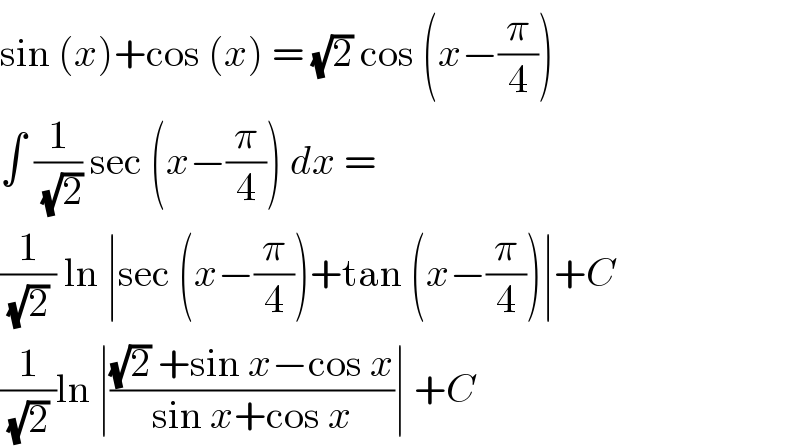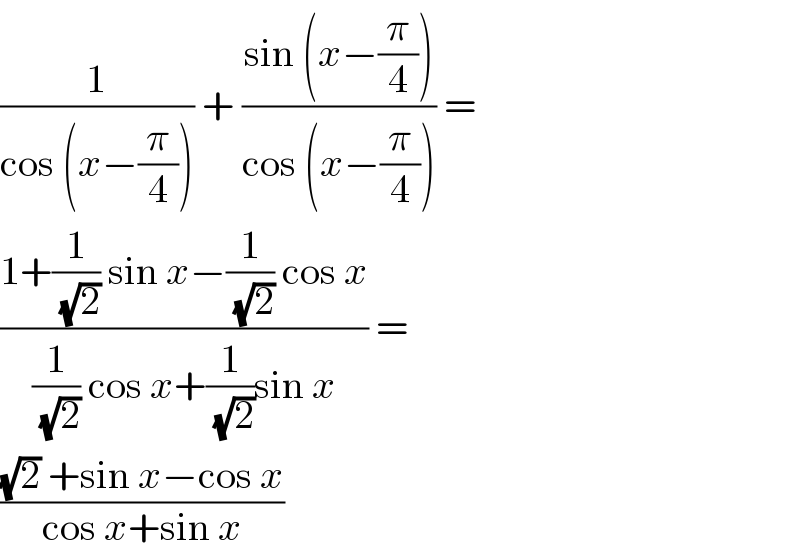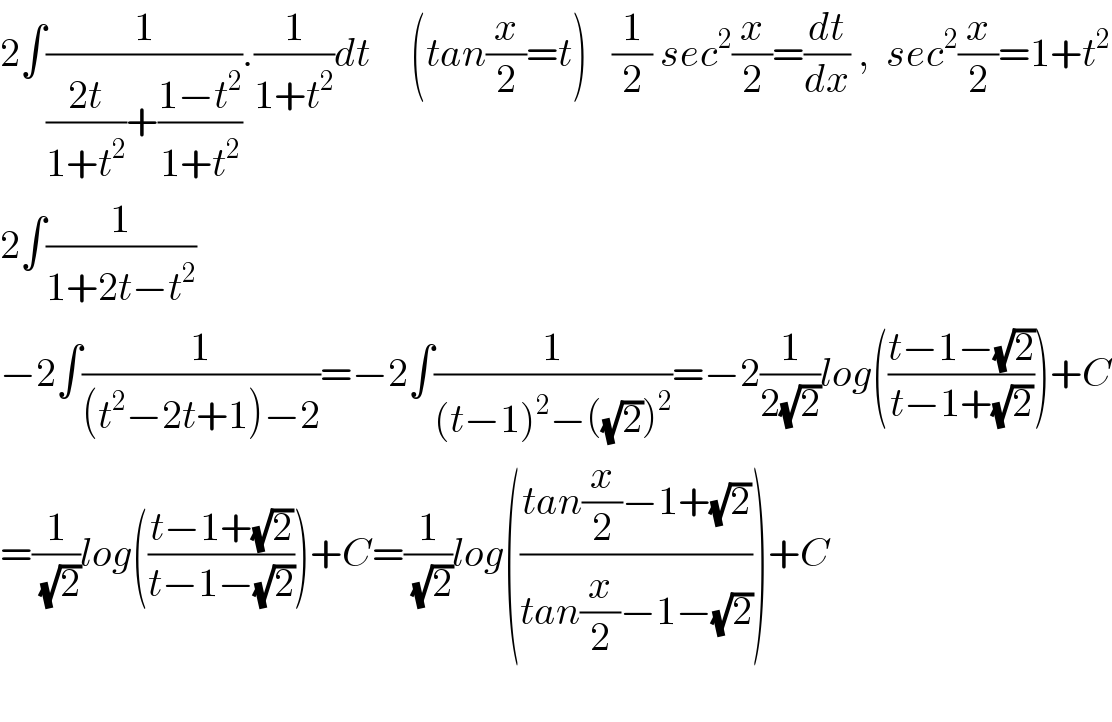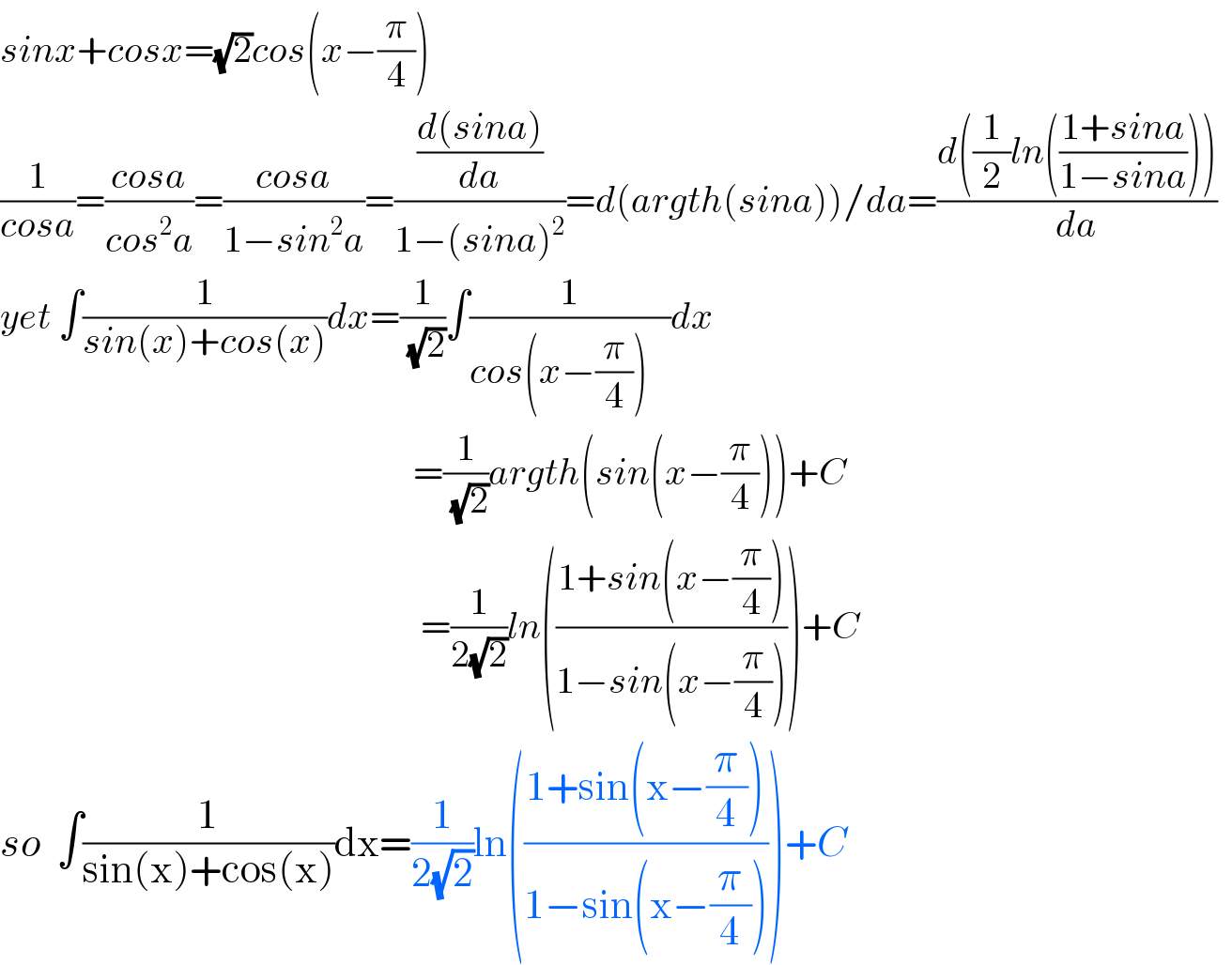
Question and Answers Forum
Question Number 105885 by mohammad17 last updated on 01/Aug/20

Answered by bemath last updated on 01/Aug/20

Commented by mohammad17 last updated on 01/Aug/20

Commented by bemath last updated on 01/Aug/20

Answered by Dwaipayan Shikari last updated on 01/Aug/20

Answered by Coronavirus last updated on 01/Aug/20

